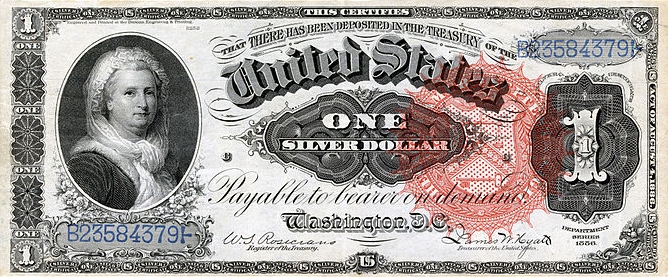
A group lobbying to replace Andrew Jackson with a woman on the $20 bill has unveiled its Final Four: former first lady Eleanor Roosevelt, abolitionist Harriet Tubman, civil rights activist Rosa Parks, and Wilma Mankiller, the first woman elected chief of a major Native American tribe, according to The Washington Post.
The group, Women On 20s, said the four were chosen from an original list of 100 names that was narrowed down after two rounds of online voting and more than 256,000 votes cast. The Top 3 vote-getters — Roosevelt, Tubman and Parks — got more than 100,000 votes apiece. Mankiller, who didn’t make the Sweet 15 cut, was added back to the final ballot due to “strong public sentiment that people should have the choice of a Native American to replace Andrew Jackson,” according to the group’s website.
Jackson, the current face on the $20 bill, supported and signed the Indian Removal Act of 1830, which relocated a number of Native American tribes to what is now Oklahoma in what’s often referred to as the “Trail of Tears.” The year 2020 is also the centennial of the 19th Amendment, which granted women the right to vote.
Women On 20s Executive Director Susan Ades Stone said that although by law it’s Treasury Secretary Jack Lew who decides who goes on U.S. paper currency, the group decided to approach President Barack Obama first — and worked hard to avoid proposing anything that might trigger the involvement of Congress, such as a new denomination of bills.
“We didn’t want this to become a political football,” Stone told The Post, adding that the group is “not under an illusion that whoever comes out as the winner of this referendum will [necessarily] be the person that will be on the bill.” Since Republicans have made two separate efforts to put Ronald Reagan on a banknote — first in 2004, targeting the $10 bill, then in 2010, hoping to bump Ulysses S. Grant off the $50 bill — that’s probably an understatement.
Still, changing banknote designs is nothing new, and it’s not unprecedented to juggle the faces on U.S. paper currency, although that hasn’t happened since 1929, when Alexander Hamilton moved from the $1,000 bill to the $10, bumping Andrew Jackson from the $10 to the $20, and displacing Grover Cleveland from the $20 to the $1,000.
Women On 20s also acknowledges that even if the group’s effort succeeds, it won’t be the first time a woman’s face has appeared on a U.S. bill. Martha Washington’s portrait appeared on the face of an oversized $1 bill in 1886 and 1891, and she and George appeared on the reverse side of a 1896 bill.